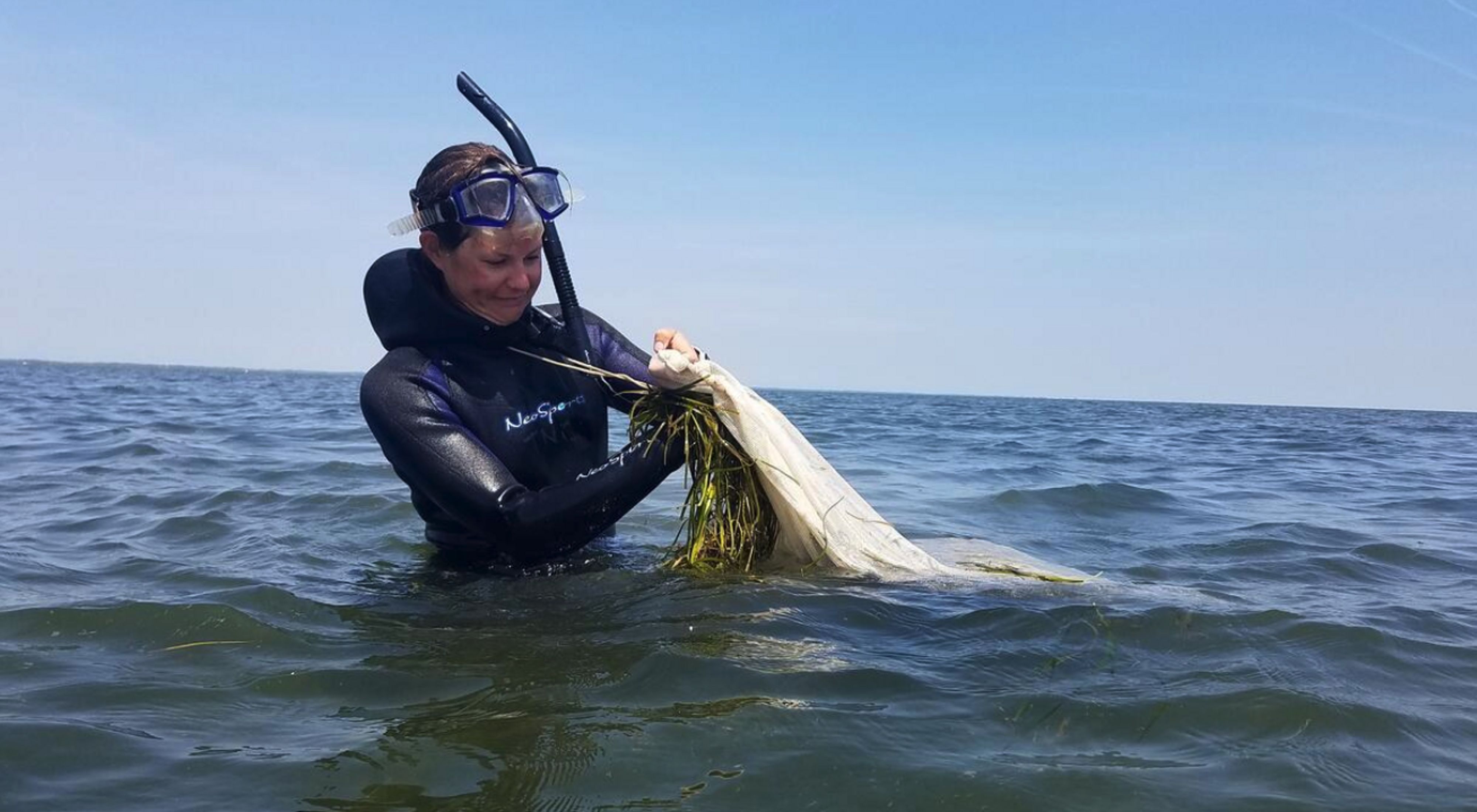A Collective Effort to Help Eelgrass Adapt to Climate Change
What can genetic research on trees in Arizona teach us about saving this carbon-storing seagrass in Long Island?
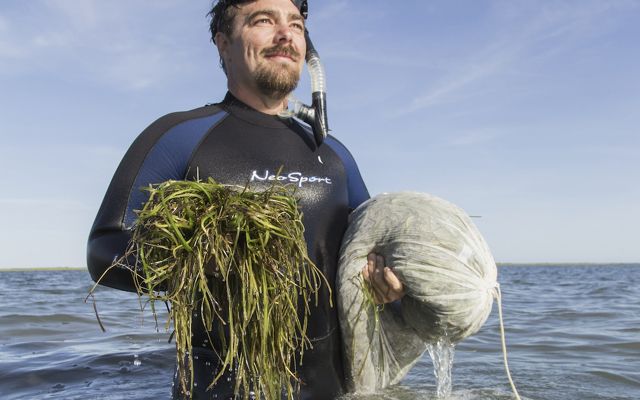
What Is Eelgrass?
Eelgrass is a foundational species, meaning they hold a strong role in creating community. It is also a powerful carbon sequester and could prove to be valuable in climate mitigation efforts. Healthy eelgrass beds improve water quality, stabilize sediment and coastal erosion, and are home to an extremely diverse community of creatures large and small who depend upon it for habitat.
The high desert sun warms his back as Dr. Tom Whitham, an accomplished biologist at Northern Arizona University, stops to survey one of the Fremont cottonwood trees growing at The Nature Conservancy’s Dugout Ranch in Canyonlands National Park. The trees here were grown from cuttings of Fremont cottonwoods collected from different regions and microclimates of the Southwest. Referred to as a common garden, this several-acre research plot allows scientists to observe how populations of the same species from different geographies respond to shared conditions.
“Cottonwood trees are a foundational species, meaning they provide habitat to entire ecosystems,” he remarks. “But not all cottonwood trees are the same. Our research has shown that this Fremont cottonwood tree has different heritable genetic traits, provides habitat to an entirely different community of insects and is naturally more tolerant to drought than that one over there.”

Assisted Migration
A strategic relocation of a certain species based on genetic traits that make them more likely to thrive in certain environmental conditions
This data, among other things, tell scientists which tree populations have genetic traits that make them more likely to thrive in certain environmental conditions—and can inform the strategic relocation of trees in a process called “assisted migration.” Dr. Whitham believes this approach is essential to ensuring the ability of foundational species such as cottonwood trees, and all of the species that rely on them, to survive in the face of climate change.
Now, The Nature Conservancy (TNC) is asking if this research could serve as a model for the restoration of eelgrass, an underwater, carbon-storing foundational species in rapid decline in the bays of Long Island in New York and all along the East Coast.
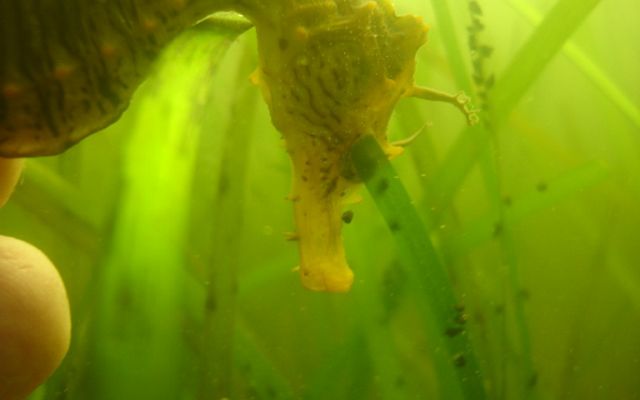
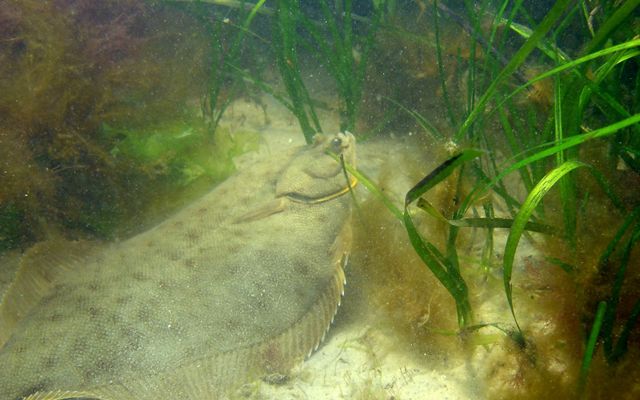
Eelgrass, Critical Fish Habitat and a Climate Superstar, at Risk
Nearly 2,500 miles away in Long Island, Dr. Brad Peterson, associate professor of marine science at Stony Brook University, flies an eelgrass surveillance drone above his research boat in the Peconic Estuary. He notes a significant loss of eelgrass and that the majority remaining is concentrated near the ocean inlet where the water is cooler. “If you compare rising water temperatures around the planet, the east coast of the U.S. is warming at double the rate of some other places,” says Dr. Peterson. “Our waters are warming so quickly that eelgrass simply doesn’t have time to adapt.”
Healthy eelgrass beds improve water quality, stabilize sediment and coastal erosion, and are home to an extremely diverse community of creatures large and small who depend upon it for habitat. Eelgrass also has tremendous carbon-storing abilities, up to five times more than a terrestrial forest, making it extremely valuable as a natural climate solution and efforts to slow its loss all the more important.
Quote: Adam Starke

Eelgrass beds provide space for fish to hide and rest and support an incredible array of marine species. If eelgrass disappears, so does everything else.
"In a forest or garden, you have all sorts of plant and animal life and a very diverse ecosystem,” says Adam Starke, a TNC coastal scientist in New York. “Eelgrass beds are the underwater equivalent of that—they provide space for fish to hide and rest and support an incredible array of marine species. If eelgrass disappears, so does everything else.”
Historically, eelgrass populations on the east coast have ranged from the cool estuarine waters of North Carolina to the cold waters of Canada. Though eelgrass has struggled for decades from the impact of nitrogen pollution from failing wastewater systems, quickly warming water is posing an even bigger threat—and one that’s harder to solve for. If nothing is done, projections show that by 2050, eelgrass will no longer be able to survive south of Long Island Sound, where eelgrass has declined by 90% over the past 100 years.
“If we don’t figure out how to help eelgrass adapt, it will disappear sequentially from south to north along with all of the climate and ecosystem benefits services it offers,” says Dr. Boze Hancock, senior marine restoration scientist for TNC. “We need to identify eelgrass populations with genetic traits that can handle the higher water temperatures we are seeing now and the even higher ones we know are coming.”
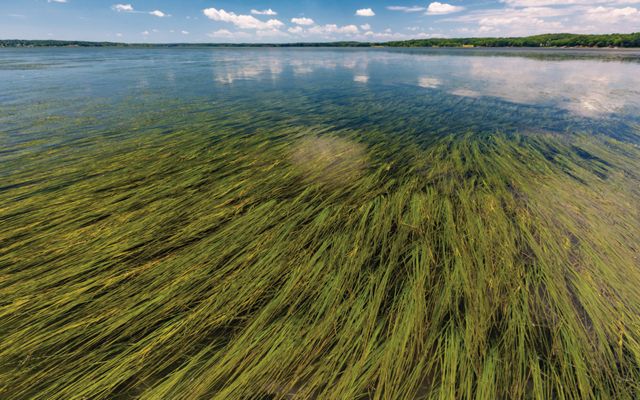
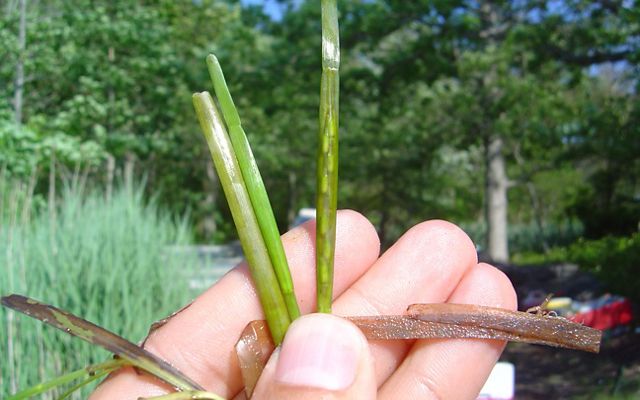
Common Gardens to Guide Assisted Migration of Eelgrass
Recognizing the urgency of the issue, TNC funded a series of collaborative workshops involving Dr. Whitham, Dr. Peterson and other land-based, freshwater and marine experts from the Smithsonian Institution, Northeastern University and the Environmental Protection Agency to discuss how to help eelgrass adapt to climate change in New York.
“Foresters, farmers and marine researchers who specialize in coral and oysters are facing similar challenges and have been working toward solutions for some time,” says Starke. “We convened this group to learn from their collective experience and together create a strategic path forward for eelgrass restoration."
Dr. Whitham theorizes that similar to common gardens for cottonwood trees, planting eelgrass populations from different latitudes in underwater common gardens along the East Coast would help determine which eelgrass variations could survive in changing conditions—and that information could guide successful assisted migration efforts. For example, an eelgrass population that thrives today in a Virginia estuary might be best suited for the warming waters of Long Island in the future.
“My prediction would be that everything we’re seeing with cottonwoods, we would see with eelgrass,” says Dr. Whitham. “With cottonwoods, genetic variations make the trees either temperature- and drought-tolerant or not. With eelgrass, genetics might determine tolerance to water temperature, pollution, salinity and even turbidity—and offer the ability to match genetic variations to environmental conditions in which they have been shown to thrive.”
Dr. Peterson agrees. In partnership with TNC, he has been conducting limited research on different eelgrass populations in Long Island estuaries for the last several years, but he believes it needs to happen on a bigger geographic scale. A regional effort would be a novel approach for eelgrass restoration and require regulatory buy-in, but the data gathered would be incredibly valuable in the effort to preserve as much eelgrass habitat as possible now and into the future.
“By 2023, we will have a series of common gardens in New York State, but they'll be confined to the state because of current regulations,” says Dr. Peterson. “Due to the urgency of the issue and the speed at which temperatures here are rising, we need to be looking at different eelgrass populations in common gardens throughout the region to determine which will be able to survive over the long term.”
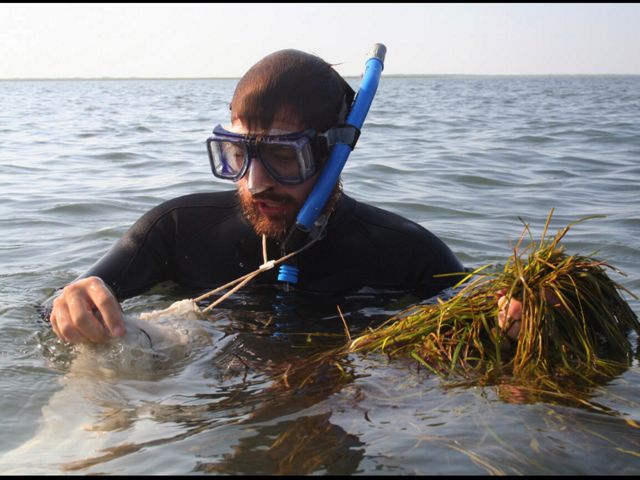
Bo Lusk collects eelgrass chutes during a seagrass restoration project in the South Bay of the Virginia Coast Reserve.
A Collaborative Approach to the Loss of a Foundational Species in a Climate-Changing World
The climate crisis is a shared crisis. Rapidly changing conditions are threatening foundational species on land and underwater in every region of the planet—from cottonwoods to mangroves and from seagrass to coral. It’s happening quickly and requires that we work together toward solutions, across disciplines and geographies.
“There are many parallels for what’s happening to seagrasses in other parts of the world and also for similar types of ecosystems on land and in freshwater,” says Carl LoBue, New York Oceans Program director for TNC. “Just as the research that Dr. Whitham and Dr. Peterson have done is informing our work in New York, the outcomes of this workshop can hopefully serve as a model for others in the future.”
The next step? To convene an expanded group that will include seagrass researchers and federal partners from across the region. Ultimately, the goal is to create a regional plan for coordination and the necessary regulatory approvals to develop the science and research necessary to inform restoration efforts for eelgrass that will be successful over the long term.
“Like climate change itself, the loss of foundational species such as eelgrass is not an issue exclusive to New York,” says Dr. Hancock. “Identifying populations that will survive in the face of climate change requires regional and global cooperation. I’m inspired by this collaboration with a diverse set of experts and researchers from around the country and world. I find hope in the fact that we are working together on this.”
